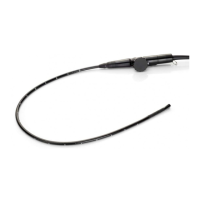Safety Information
2 Operator's Manual
●
To avoid injury to the patient, avoid forceful intubation pressure which can
cause lacerations of the gastrointestinal tract with attendant and subsequent
perforation.
●
The deflection may after prolonged use develop an unwanted amount of free
play. In that case, contact the Mindray Customer Service Department or sales
representative to readjust the steering of the transducer. In this way, the risk of
“buckling” or “U-turning” of the transducer in the esophagus is minimized.
●
Confirm that the transducer and cable are normal before and after each
examination. A defective transducer may cause electric shock to the patient.
●
When using intra-cavity transducers, do not activate the transducer outside the
patient’s body.
●
The connector is not watertight, and should always be kept dry. The control unit,
although spray-watertight, should not be immersed.
●
Do not subject the transducer to shock. A defective transducer may cause electric
shock to the patient.
●
This equipment contains no operator serviceable components. To prevent electric
shock, do not remove any covers or panels.
●
DO NOT use the transesophageal probe with the defibrillator.
CAUTION
●
When using this transducer, wearing medical gloves can help to prevent infection.
●
To avoid inadvertent damage to the transducer, read this user guide before
handling and cleaning the TEE transducer.
●
Be sure to use ultrasound gel. Please use the ultrasound gel compliant with the
relevant local regulations. Proper management and use of the ultrasound gel is
essential to ensure that it will not become a source of infection.
Only use water-based coupling gel.
●
Under normal conditions at full acoustic power the temperature of the tip
does not exceed 43°C. Follow the instruction in this user manual to check this
regularly.
●
If the laparoscopic probe is faulty, freeze the image and stop using the
transducer, and then slowly remove the transducer from the patient. Do not use
the laparoscopic transducer before maintenance.
●
Before each use or after a change of viewing modes/settings, pay attention to the
status of the ultrasound image. Do not use the probe to perform image acquisition
when the image is frozen. Ensure that the orientation of the ultrasound image is
correct. Check the orientation prior to the examination
●
Before each use, the outer surface of the portions of laparoscopic probe which
are intended to be inserted into a PATIENT should be checked to ensure there
are no unintended rough surfaces, sharp edges or protrusions which may cause
HARM.
●
Do not use the carrying case for storing the transducer. If the carrying case is
used for storage, it may become a source of infection.

